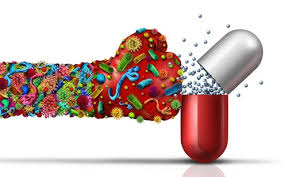The Challenge of Antimicrobial Resistance
Antimicrobial resistance (AMR) poses a significant threat to public health worldwide, undermining the effectiveness of antibiotics, antivirals, and antifungals. As microbes evolve and develop resistance to existing treatments, combating AMR has become an urgent priority for the global healthcare community.
2. The Rise of Antimicrobial Resistance
The overuse and misuse of antimicrobial drugs in human healthcare, agriculture, and animal husbandry have accelerated the emergence of antimicrobial resistance. Factors contributing to the rise of AMR include:
- Inappropriate Antibiotic Prescribing: Overprescribing and inappropriate use of antibiotics contribute to the development of resistant strains of bacteria.
- Suboptimal Infection Control Practices: Poor infection prevention and control measures in healthcare settings facilitate the spread of drug-resistant pathogens.
- Antimicrobial Use in Agriculture: The use of antibiotics in livestock farming promotes the emergence of resistant bacteria in food animals, which can subsequently infect humans through the food chain.
3. Global Efforts to Combat Antimicrobial Resistance
Recognizing the severity of the AMR crisis, governments, healthcare organizations, and international agencies have intensified their efforts to address antimicrobial resistance. Key initiatives include:
- National Action Plans: Many countries have developed national action plans to tackle antimicrobial resistance, outlining strategies for surveillance, stewardship, and research.
- Global Surveillance Networks: Organizations such as the World Health Organization (WHO) and the Centers for Disease Control and Prevention (CDC) coordinate global surveillance networks to monitor antimicrobial resistance trends and identify emerging threats.
- Stewardship Programs: Antimicrobial stewardship programs promote the appropriate use of antimicrobial drugs in healthcare settings, aiming to optimize patient outcomes while minimizing the development of resistance.
- Research and Development: Investment in research and development is essential for discovering new antimicrobial agents, diagnostic tools, and alternative treatment modalities to combat AMR.
4. The Role of Healthcare Professionals and the Public
Healthcare professionals play a crucial role in combating antimicrobial resistance by promoting judicious antibiotic use, implementing infection control measures, and educating patients about the importance of adherence to treatment protocols. Additionally, raising public awareness about the risks of AMR and the importance of responsible antimicrobial use is essential for fostering behavior change and reducing the spread of drug-resistant infections.
Collaborative Action is Key
Addressing antimicrobial resistance requires a coordinated, multi-sectoral approach involving governments, healthcare providers, researchers, industry stakeholders, and the public. By working together to implement effective strategies for surveillance, stewardship, and innovation, we can mitigate the threat of AMR and safeguard the effectiveness of antimicrobial drugs for future generations.




